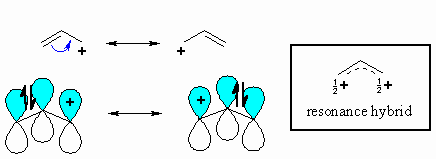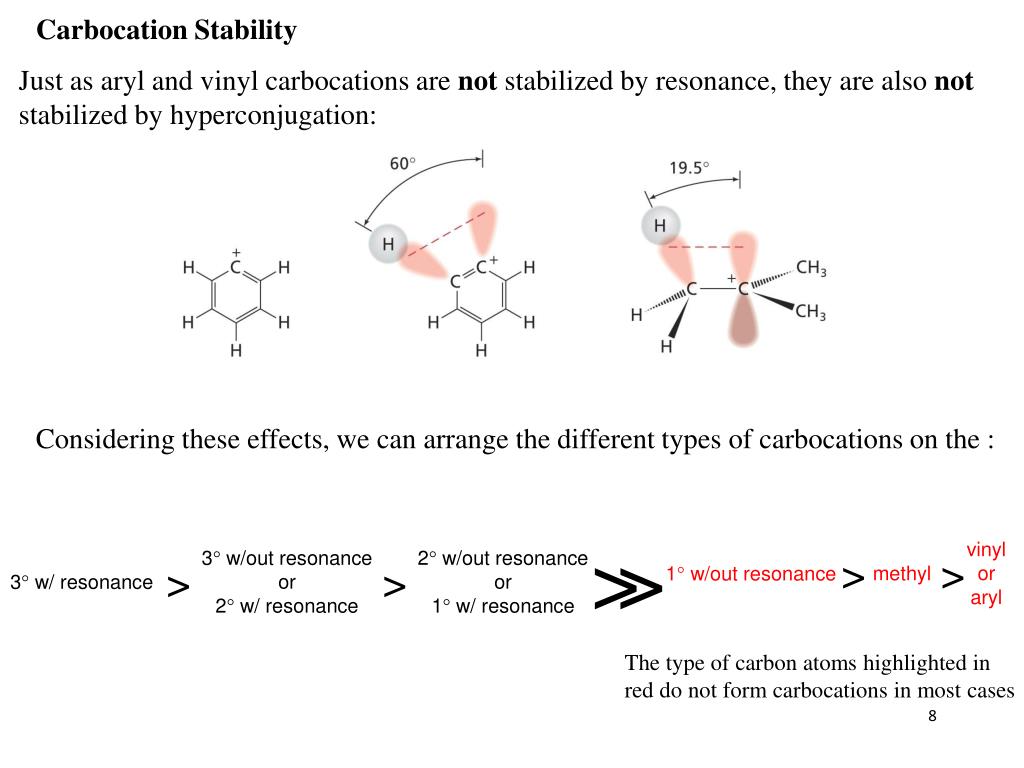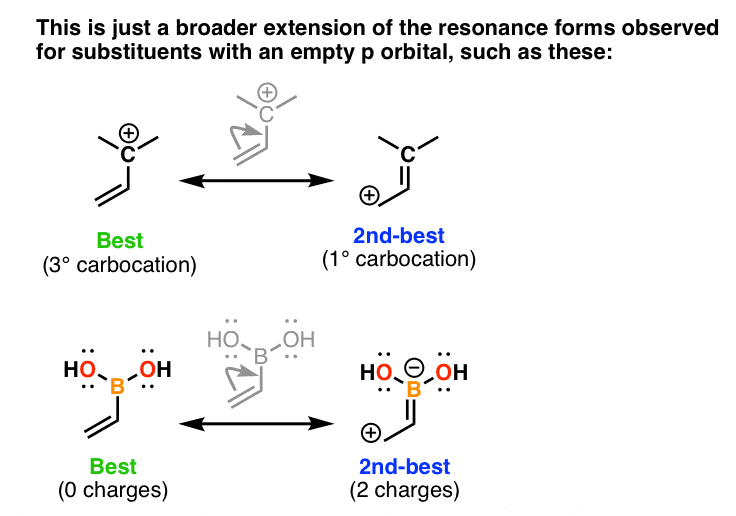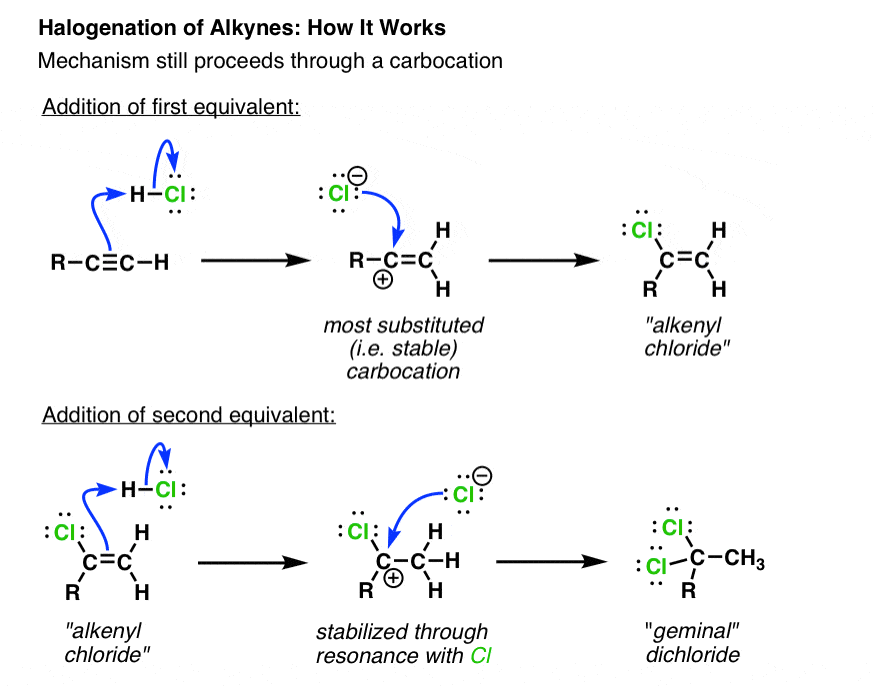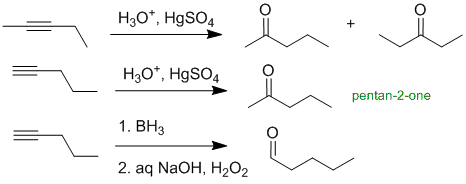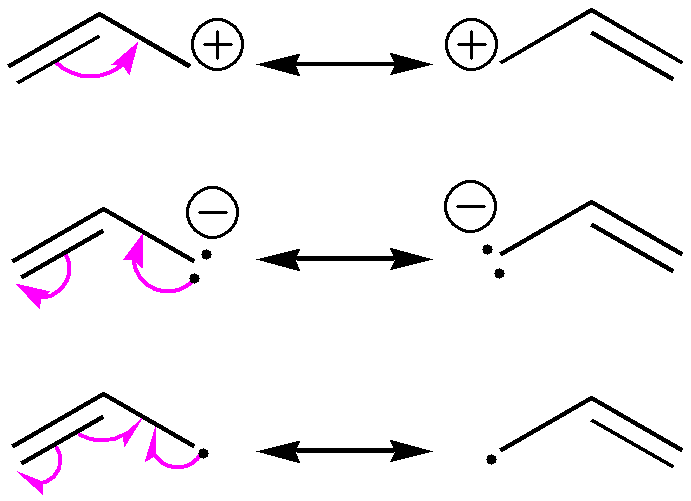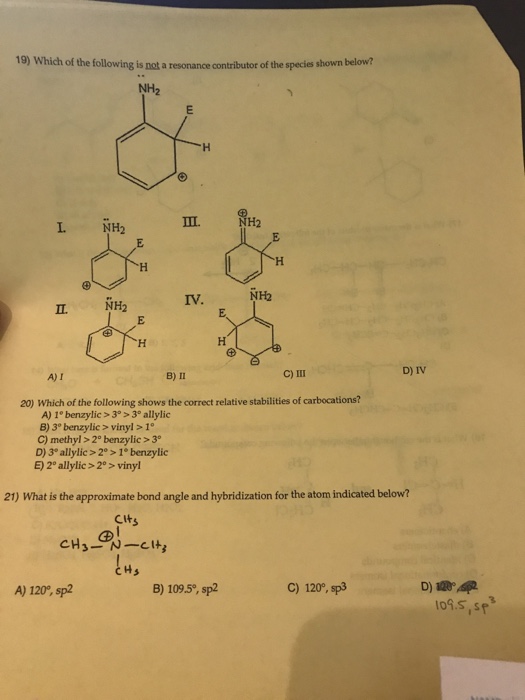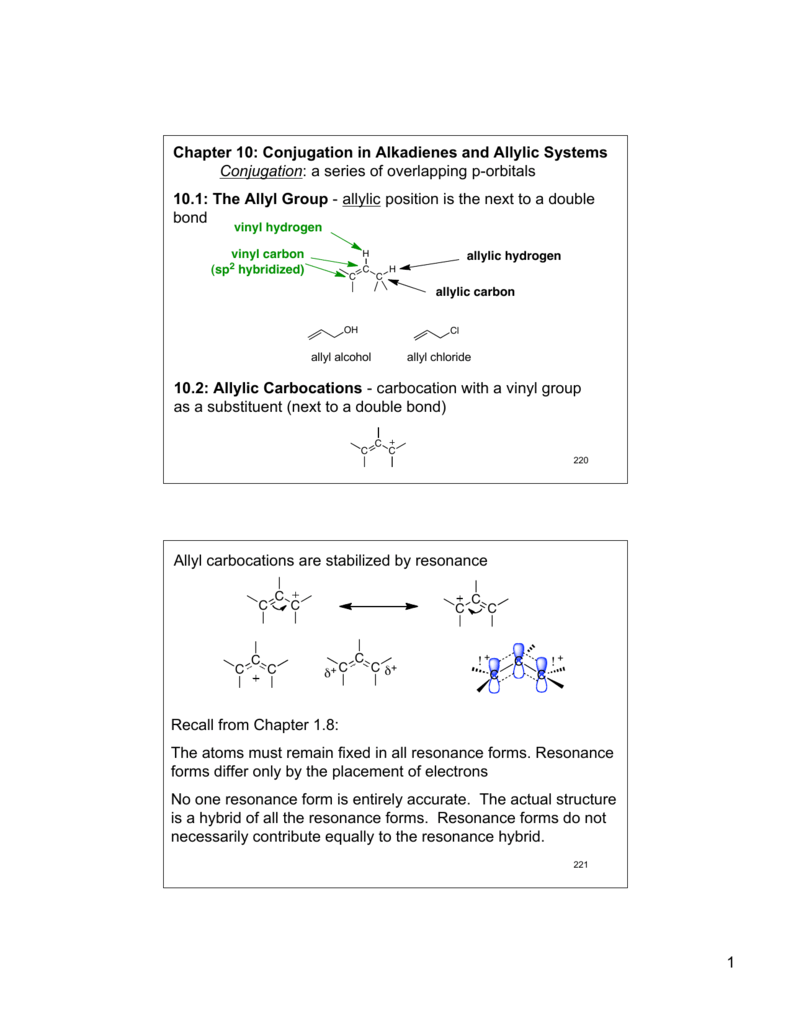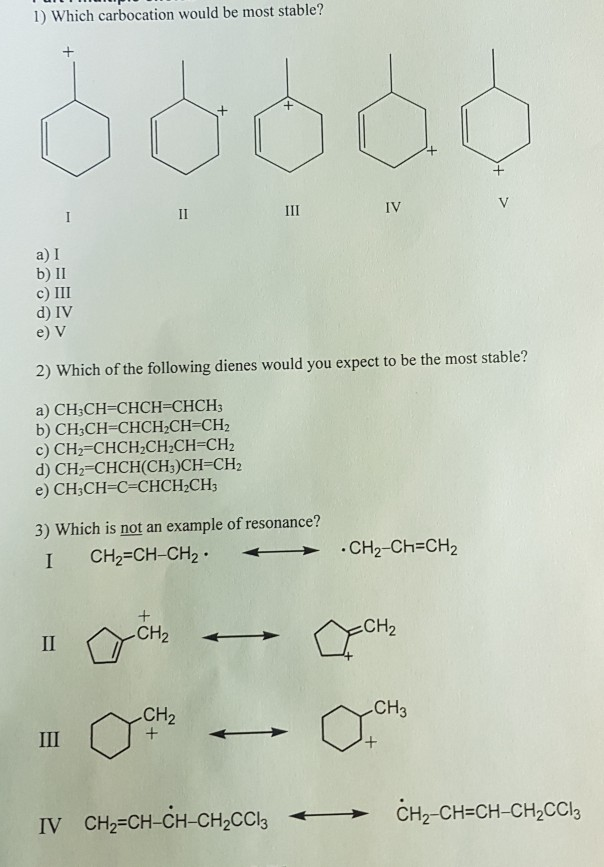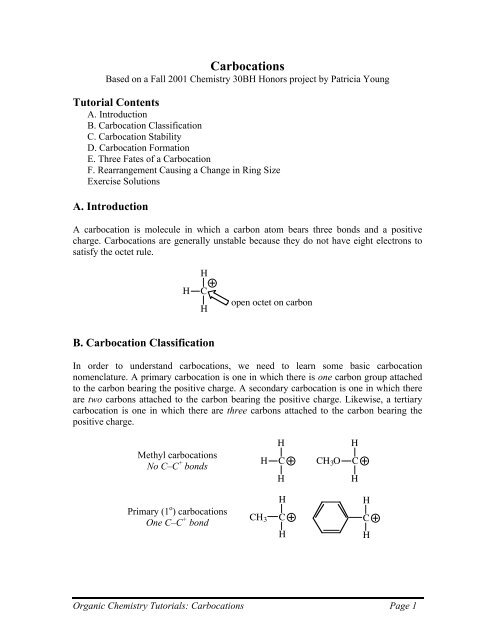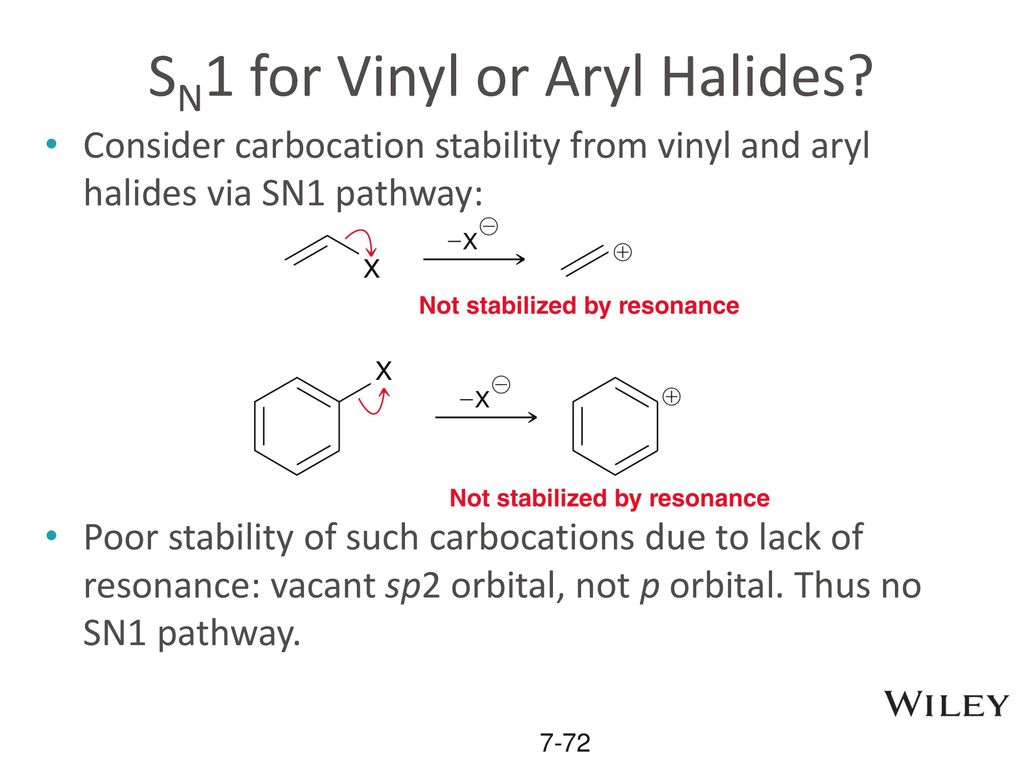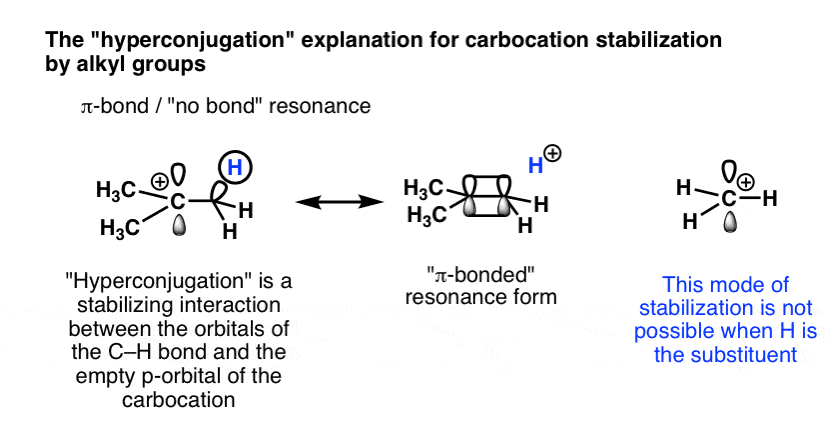Vinyl Carbocation Resonance

In the first mechanism step the alkyne is protonated by hydronium ion a strong acid to produce a resonance stabilized secondary vinylic carbocation shown in red.
Vinyl carbocation resonance. Carbon with two other atoms attached prefers sp hybridization and a linear geometry. Allylic carbocations are able to share their burden of charge with a nearby group through resonance. A vinyl cation is a positively charged molecule a cation where the positive charge is located on a vinyl group ch ch2. Any trivalent disubstituted carbon is generally a vinylic carbocation in which the carbon atom which is bearing the positive charge is found to be double bonded and will always exist as sp hybridized.
Resonance forms differ only by the placement of electrons no one resonance form. Stability of carbocation intermediates. The rate of this step and therefore the rate of the overall substitution reaction depends on the activation energy for the process in which the bond between the carbon and the leaving group breaks and a carbocation forms. It provides plenty of examples including allylic and vinyli.
Its empirical formula is c 2 h 3 more generally a vinylic cation is any disubstituted trivalent carbon where the carbon bearing the positive charge is part of a double bond and is sp hybridized in the chemical literature substituted vinylic cations are often referred to as vinyl cations and understood to. The rate of this step and therefore the rate of the overall substitution reaction depends on the activation energy for the process in which the bond between the carbon and the leaving group breaks and a carbocation forms. Stability of carbocation intermediates. The vinyl carbocation a primary carbocation.
This organic chemistry video tutorial explains how to determine which carbocation is most stable. This is very very unstable and ranks under a methyl carbocation in stability. The atoms must remain fixed in all resonance forms. The vinyl cation is a carbocation with the positive charge on an alkene carbon.
Allylic carbocations carbocation with a vinyl group as a substituent next to a double bond cc c 221 allyl carbocations are stabilized by resonance cc c cc c c c c cc c cc c recall from chapter 1 8. Acid catalyzed hydration of phenyl acetylene a terminal alkyne involves a vinylic carbocation intermediate. The hybridization of a vinyl carbocation is sp hybirdized. Vinyl carbocation is unstable.
We know that the rate limiting step of an s n 1 reaction is the first step formation of the this carbocation intermediate. We know that the rate limiting step of an s n 1 reaction is the first step formation of the this carbocation intermediate.





